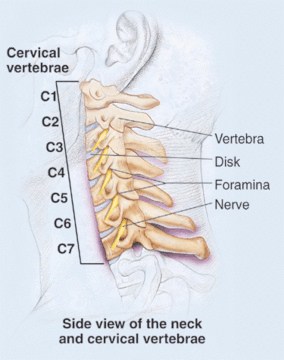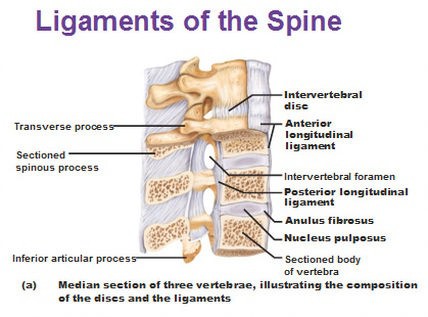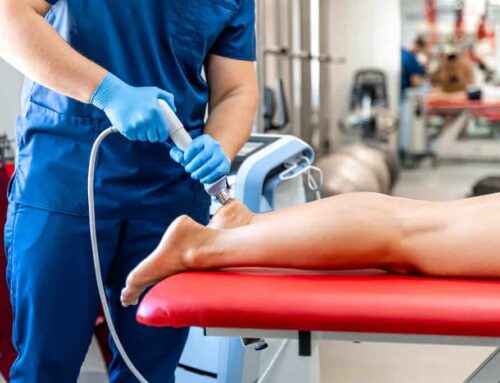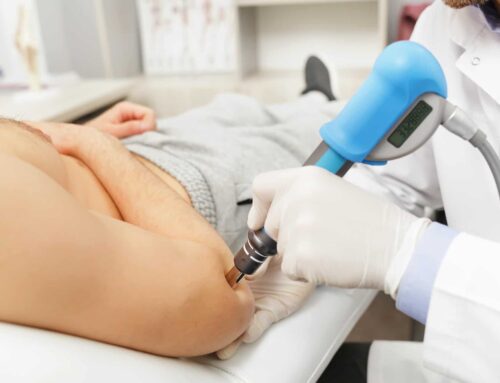What’s whiplash injury?
Have you been rear-ended and having neck pain? You might have whiplash.
The most common type of motor vehicle collision is rear-end collisions with an occurrence of about 1.7 million per year. Many of the people involved in these collisions will get “whiplash,” and only half of them will spontaneously recover. The other half may go on to experience continued dizziness, headaches, and pain. This blog series will focus on the most current evidence in whiplash, how to maximize your chances at recovery, what to expect from physical therapy, and what you can if you have had whiplash for a long time.
This is part 1 of 3. In this blog we will focus on these questions:
1. The anatomy of the neck.
3. What to do if you have just been injured?
First let’s do some housekeeping and establish the anatomy of the neck.
The anatomy.
Your vertebrae are the bones that make your neck. There are 7 vertebrae that connect your head to your shoulders. The ligaments and muscles help to stabilize the bones. The muscles also provide the ability to move. The discs are between your bones and are primarily made of water. They are responsible for shock absorption, and keeping the space between the bones so that the nerves may exit the spine. The nerves are responsible for relaying messages to and from your brain and muscles. Last but not least the vascular system is responsible for moving blood to and from all of your tissues and organs. (See figures below).
http://www.ethertonchiropractic.com/
http://antranik.org/
What is “whiplash?”
Whiplash is generally classified as neck pain following a high velocity, uncontrolled movement of the neck. It is generally associated with results of a car accident but can be due to any impact causing your head and/or neck to jerk. There has been no definitive answer to what causes lasting symptoms from a whiplash injury, as the condition may vary case-by-case. Recently however studies have identified structural changes in the neck musculature of those with poor recovery.1,2 When a muscle is damaged, if not appropriately rehabilitated, fatty tissue may be deposited in the muscle causing it to weaken. This weakness leads to your neck becoming unstable, meaning the muscles that are used to move and support your neck cannot perform the same job they once were able to perform. They either have to use more force, or you may end up compensating with other muscle groups leading to muscular fatigue and an achy exhausted feeling.
It has been shown that the positions of the head, neck, and body throughout a whiplash injury are generally within normal physiologic limits.1 It is therefore my professional opinion that it is not the limit of range of motion that is tested, but the speed with which the incident occurs that causes the injury. Normally what protects us against excessive speed of joint movement is our muscles. If the incident is unexpected the muscles may contract late or not at all. In the case of a late contraction, they are performing a high-speed eccentric contraction (meaning they are trying to hold on while being stretched), which may result in small tears. This theory may be supported by the evidence of fatty infiltrates in the stabilizing musculature of the neck. If they do not contract at all, this is when greater ligamentous or structural damage may occur. These cases may be more serious and result in fracture or disc damage.
What to do if you have been injured?
Rebuilding of your damaged tissues begins quickly, within 2 weeks after the incident. It is important that you be active in your recovery process and seek physical therapy treatment. Rehabilitation involving neck specific exercises for motor control and endurance has been shown to be effective in recovering from whiplash.3 If you do not live in a direct access state (see our direct access blog), you may require a prescription to attend therapy.
Your therapist may use a variety of manual techniques, exercises, and modalities to get you on track. Use of medicine as prescribed to alleviate your pain, and ice in the meantime are appropriate measures to take. Our next whiplash blog will focus on what to expect with therapy, and the usefulness of imaging in whiplash injury. It will also have some example exercises to get you started!
1. Elliott J, Dayanidhi S, Hazle C, et al. Advancements in Imaging Technology: Do They (or will they) Equate to advancements in Our Knowledge of Recovery in Whiplash? J Orthop Sports Phys Ther. 46(10):862-870.
2. Jull G. Whiplash Continues Its Challenge. J Orthop Sports Phys Ther. 46(10):815-816.
3. Karlsson A, OD L, Aslund U, et al. An Investigation of Fat Infiltration of the Multifidus Muscle in Patients With Severe Neck Symptoms Associated With Chronic Whiplash-Associated Disorder. J Orthop Sports Phys Ther. 46(10):886-893.





